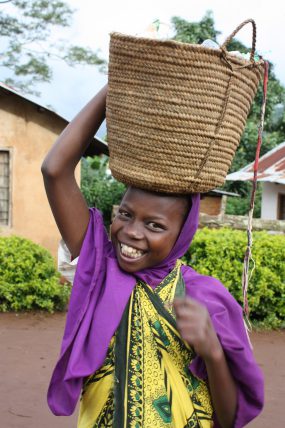Research Brief: Sexual violence against girls in Tanzania is linked to later experiences of sexual risk behaviors
Background
Prior research has established an association between sexual violence and HIV. Exposure to sexual violence in childhood can profoundly impact the brain architecture of victims, as well as their ability to regulate stress throughout their lifetimes. Individuals who experience sexual violence may engage in behaviors that increase their risk for other health problems, including physical and mental health conditions. The Violence Against Children Survey (VACS) was conducted in Tanzania in 2009 to measure the burden of violence against children and examine circumstances of the violence as well as associated health problems. This study used the Tanzania VACS data to answer two main questions. First, are girls in Tanzania who are victims of violence in childhood more likely to engage in high-risk sexual behavior in early adulthood than non-victims? Second, are they also more or less likely to know about HIV testing services and to have been tested for HIV?
Key Findings
The analyses focused on girls ages 19-24, so that their experiences of sexual violence before the age of 18 pre-dated their report of sexual risk behaviors and HIV testing services in the past 12 months. Although data were collected among both sexes in Tanzania, the prevalence of sexual violence was much lower among boys than girls. Also, the circumstances for sexual violence and HIV acquisition differ significantly between boys and girls For these reasons, this study only focused on girls, as analyses, conclusions, and recommendations would have to be tailored differently for boys.
46% of young women ages 19-24 who experienced sexual violence before age 18 reported no condom use or infrequent condom use in the past 12 months, compared to 24% of non-victims.
- 36% of young women ages 19-24 who experienced sexual violence before age 18 had multiple sex partners in the past 12 months, compared to 19% of non-victims.
- Sexual violence victims are at increased risk for HIV, but they were not more likely to know about HIV testing services or to have been tested for HIV.
What is added by this report?
Victims of sexual violence in childhood engage in more sexually risky behaviors in young adulthood, including no condom use or infrequent condom use and having multiple sex partners in the past 12 months. Victims were not more likely to know about HIV testing services in their communities or to have been tested for HIV, despite the fact that they could be at increased risk for HIV as victims of sexual violence. Victims of childhood sexual violence could benefit from targeted interventions and services to address the impact of violence and prevent HIV infection.
Chiang LF, Chen J, Gladden MR, Mercy JA, Kwesigabo G, Mrisho F, Dahlberg LL, Nyunt MZ, Brookmeyer KA, Vagi K. HIV and childhood sexual violence: Implications for sexual risk behaviors and HIV testing in Tanzania. AIDS Education and Prevention 2015; 27(5): 474-488.
*Footnote: some variation between prevalence estimates from published papers and country reports may exist. This variation reflects slight differences in the subsamples and variables used in the analyses.
